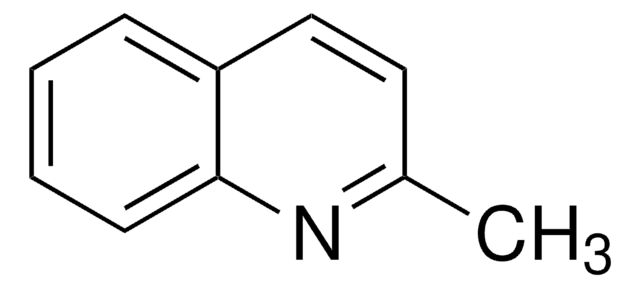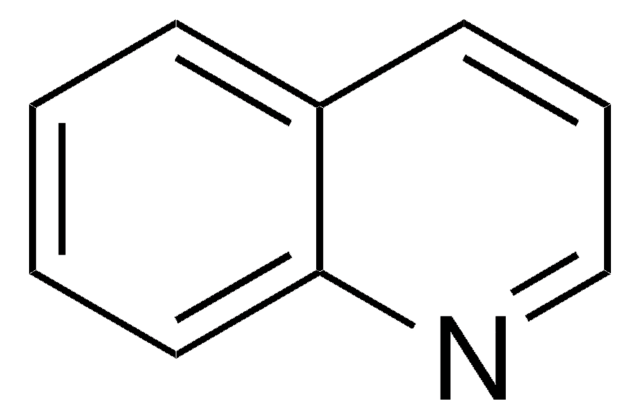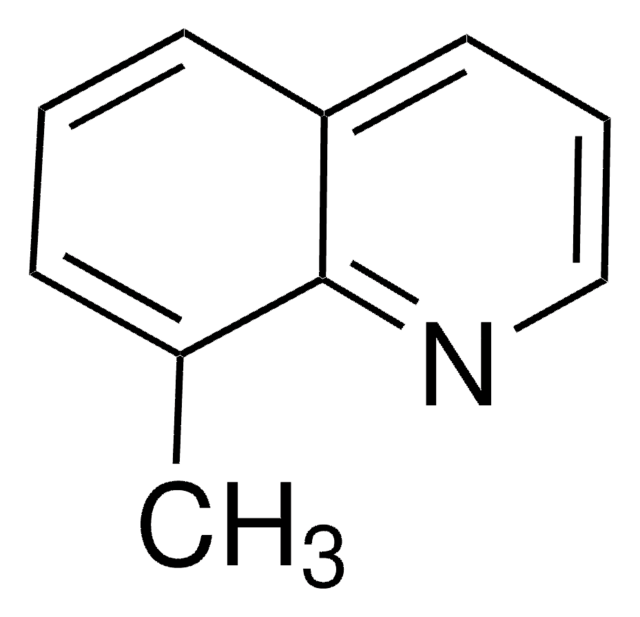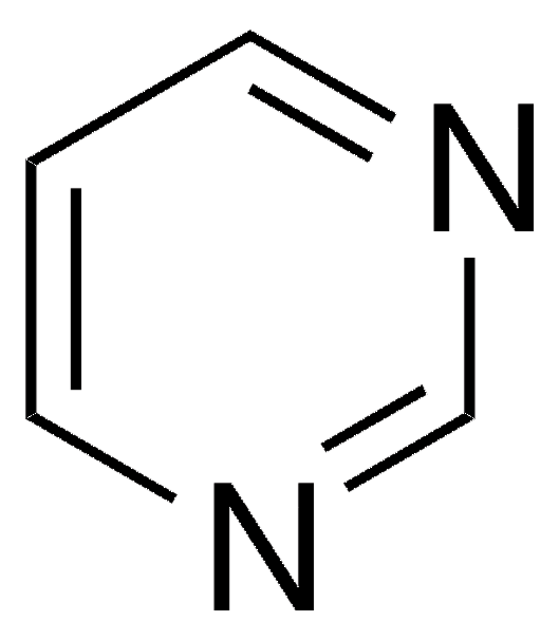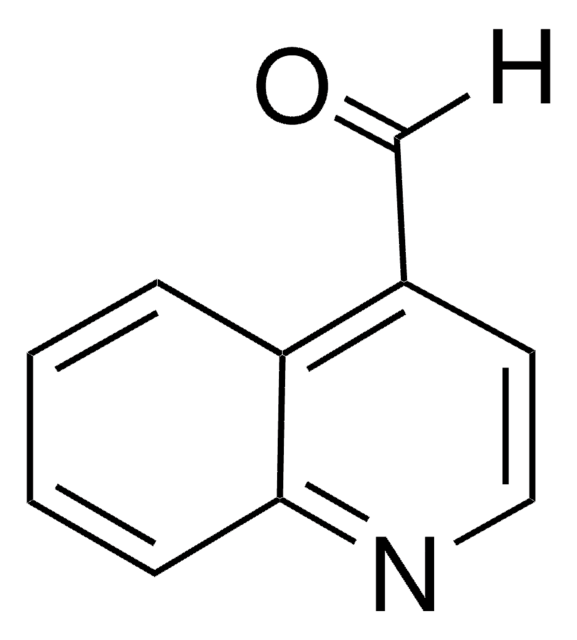All Photos(1)
About This Item
Empirical Formula (Hill Notation):
C10H9N
CAS Number:
Molecular Weight:
143.19
Beilstein/REAXYS Number:
110926
EC Number:
MDL number:
UNSPSC Code:
12352100
PubChem Substance ID:
NACRES:
NA.22
Recommended Products
assay
99%
form
liquid
refractive index
n20/D 1.620 (lit.)
bp
261-263 °C (lit.)
mp
9-10 °C (lit.)
density
1.083 g/mL at 25 °C (lit.)
SMILES string
Cc1ccnc2ccccc12
InChI
1S/C10H9N/c1-8-6-7-11-10-5-3-2-4-9(8)10/h2-7H,1H3
InChI key
MUDSDYNRBDKLGK-UHFFFAOYSA-N
Looking for similar products? Visit Product Comparison Guide
Related Categories
General description
Synthesis of lepidine from 4-anilinobutan-2-one in ethanol in the presence of HCl or FeCl3 has been reported. Nitration of lepidine has been reported.
signalword
Warning
hcodes
Hazard Classifications
Eye Irrit. 2 - Skin Irrit. 2 - STOT SE 3
target_organs
Respiratory system
Storage Class
10 - Combustible liquids
wgk_germany
WGK 3
flash_point_f
235.4 °F - closed cup
flash_point_c
113 °C - closed cup
ppe
Eyeshields, Gloves, type ABEK (EN14387) respirator filter
Choose from one of the most recent versions:
Already Own This Product?
Find documentation for the products that you have recently purchased in the Document Library.
Customers Also Viewed
The Nitration of Lepidine and 2-Chlorolepidine.
Krahler SE and Burger A.
Journal of the American Chemical Society, 64(10), 2417-2419 (1942)
Mechanism of the Doebner-Miller lepidine synthesis.
Ogata Y, et al.
Journal of the Chemical Society B: Physical Organic, 805-810 (1969)
S D Sutton et al.
Applied and environmental microbiology, 62(8), 2910-2914 (1996-08-01)
Methylquinolines and related N-heterocyclic aromatic compounds are common contaminants associated with the use of hydrocarbons in both coal gasification and wood treatment processes. These compounds have been found in groundwater, and many are known mutagens. A stable, five-member bacterial consortium
K Saeki et al.
Biological & pharmaceutical bulletin, 19(4), 541-546 (1996-04-01)
4-Methylquinoline (4-MeQ) showed an extraordinarily potent mutagenicity when compared to quinoline and isomeric methylquinolines. The major metabolite of 4-MeQ was 4-hydroxymethylquinoline, which was not mutagenic under the assay condition employed. Deuteration of the methyl group of 4-MeQ resulted in a
S L Pfaller et al.
Canadian journal of microbiology, 45(7), 623-626 (1999-09-25)
Strain Lep1, isolated from a bacterial consortium capable of aerobic degradation of 4-methylquinoline (4-MQ), was chosen for further characterization as it was the only member of the consortium able to grow on 4-MQ in pure culture. Lep1 was identified as
Our team of scientists has experience in all areas of research including Life Science, Material Science, Chemical Synthesis, Chromatography, Analytical and many others.
Contact Technical Service